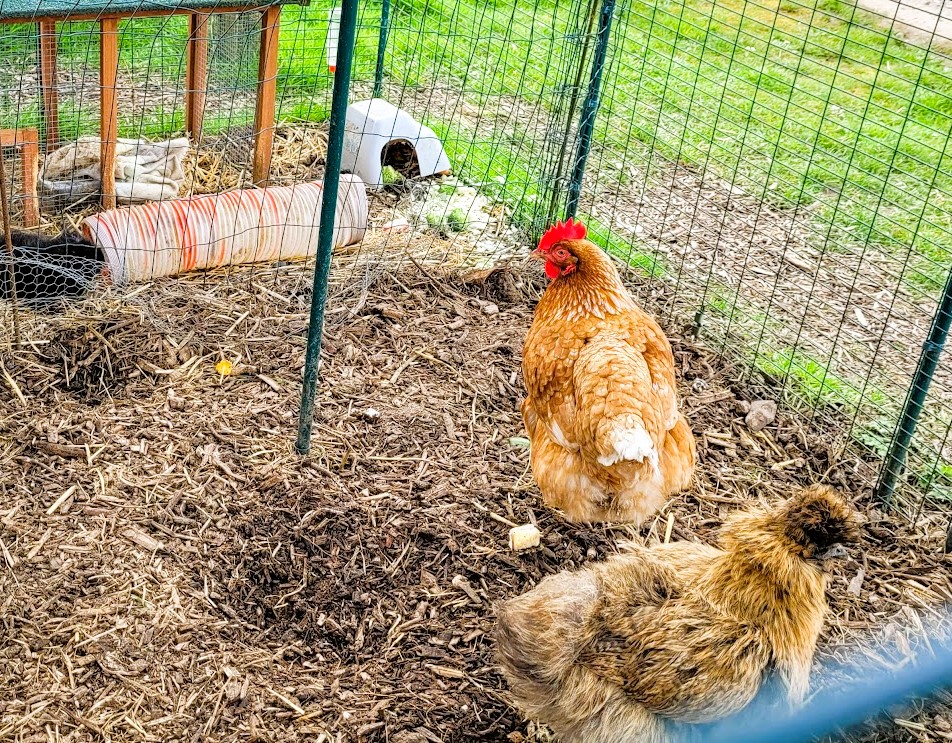New insights on how bird flu crosses the species barrier

Chickens at a farm. —Image by © Tim Sandle
The avian influenza virus has a driver to mutate to cross the species barrier and to infect and replicate within mammalian cells. Scientists from the European Molecular Biology Laboratory have now deciphered the structure of the avian influenza virus’s polymerase when it interacts with a human protein essential for the virus to replicate within the cell.
The structure of this replication complex provides important information about the mutations that avian influenza polymerase must undergo to adapt to mammals, including humans. These results can help scientists monitor the evolution and adaptability of bird flu strains, such as H5N1 or H7N9, towards infecting other species.
Recently, public health measures, surveillance, and vaccination have helped bring about significant progress in reducing the impact of seasonal flu epidemics, caused by human influenza viruses A and B.
However, a possible outbreak of avian influenza A (commonly known as ‘bird flu’) in mammals, including humans, poses a significant threat to public health.
The new study sheds light on the different mutations that the avian influenza virus can undergo to be able to replicate in mammalian cells.
Some avian influenza strains can cause severe disease and mortality. Fortunately, significant biological differences between birds and mammals normally prevent avian influenza from spreading from birds to other species. To infect mammals, the avian influenza virus must mutate to overcome two main barriers: the ability to enter the cell and to replicate within that cell. To cause an epidemic or pandemic, it must also acquire the ability to be transmitted between humans.
However, sporadic contamination of wild and domestic mammals by bird flu is becoming increasingly common. Of particular concern is the recent unexpected infection of dairy cows in the USA by an avian H5N1 strain, which risks becoming endemic in cattle. This might facilitate adaptation to humans, and indeed, a few cases of transmission to humans have been reported, so far resulting in only mild symptoms.
At the heart of this process is the polymerase, an enzyme that orchestrates the virus’s replication inside host cells. This flexible protein can rearrange itself according to the different functions it performs during infection. These include transcription — copying the viral RNA into messenger RNA to make viral proteins — and replication — making copies of the viral RNA to package into new viruses.
Viral replication is a complex process to study because it involves two viral polymerases and a host cell protein — ANP32. Together, these three proteins form the replication complex, a molecular machine that carries out replication. ANP32 is known as a ‘chaperone’, meaning that it acts as a stabiliser for certain cellular proteins. It can do this thanks to a key structure — its long acidic tail. In 2015, it was discovered that ANP32 is critical for influenza virus replication, but its function was not fully understood.
The results of the new stud show that ANP32 acts as a bridge between the two viral polymerases — called replicase and encapsidase. The names reflect the two distinct conformations taken up by the polymerases to perform two different functions — creating copies of the viral RNA (replicase) and packaging the copy inside a protective coating with ANP32’s help (encapsidase).
Through its tail, ANP32 acts as a stabiliser for the replication complex, allowing it to form within the host cell. Interestingly, the ANP32 tail differs between birds and mammals, although the core of the protein remains very similar. This biological difference explains why the avian influenza virus does not replicate easily in mammals and humans.
To better understand this process, the scientists obtained the structure of the replicase and encapsidase conformations of a human-adapted avian influenza polymerase (from strain H7N9) while they were interacting with human ANP32. This structure gives detailed information about which amino acids are important in forming the replication complex and which mutations could allow the avian influenza polymerase to adapt to mammalian cells.
To obtain these results, the researcherscarried out in vitro experiments at EMBL Grenoble, using the Eukaryotic Expression Facility, the ISBG biophysical platform, and the cryo-electron microscopy platform available through the Partnership for Structural Biology.
These new insights into the influenza replication complex can be used to study polymerase mutations in other similar strains of the avian influenza virus. It is therefore possible to use the structure obtained from the H7N9 strain and adapt it to other strains such as H5N1.
These results are useful in the long-term perspective of anti-influenza drug development, as there are no existing drugs that target the replication complex specifically.
The findings appear in the journal Nature Communications, titled “Structures of influenza A and B replication complexes give insight into avian to human host adaptation and reveal a role of ANP32 as an electrostatic chaperone for the apo-polymerase.”
New insights on how bird flu crosses the species barrier
#insights #bird #flu #crosses #species #barrier





